外研版(2019)选择性必修第二册Unit 6 Survival Understanding ideas 课件(43张ppt)
文档属性
| 名称 | 外研版(2019)选择性必修第二册Unit 6 Survival Understanding ideas 课件(43张ppt) | 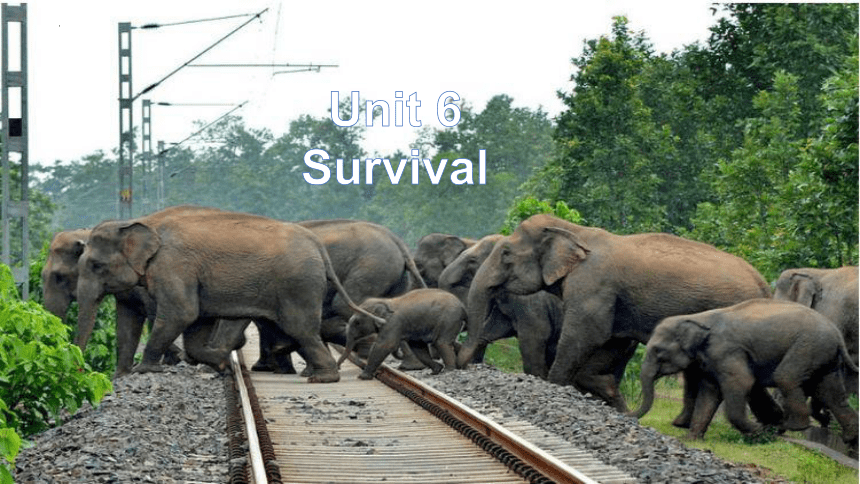 | |
| 格式 | pptx | ||
| 文件大小 | 12.0MB | ||
| 资源类型 | 教案 | ||
| 版本资源 | 外研版(2019) | ||
| 科目 | 英语 | ||
| 更新时间 | 2022-10-30 09:43:03 | ||
图片预览


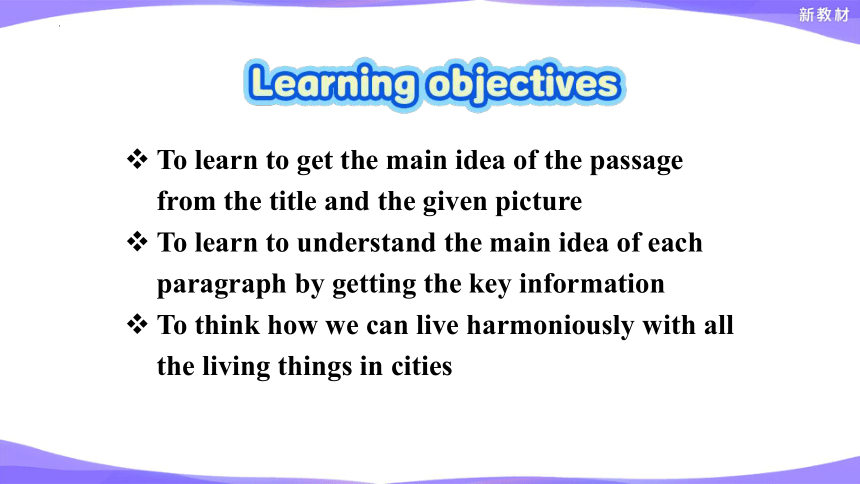
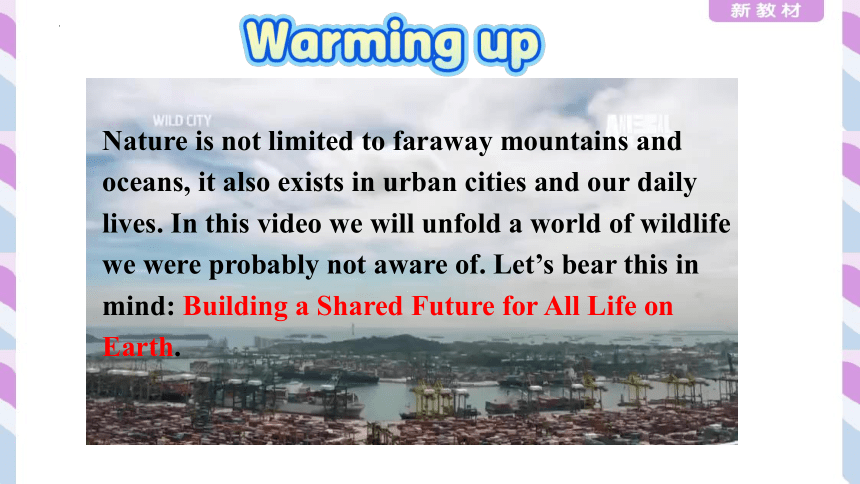
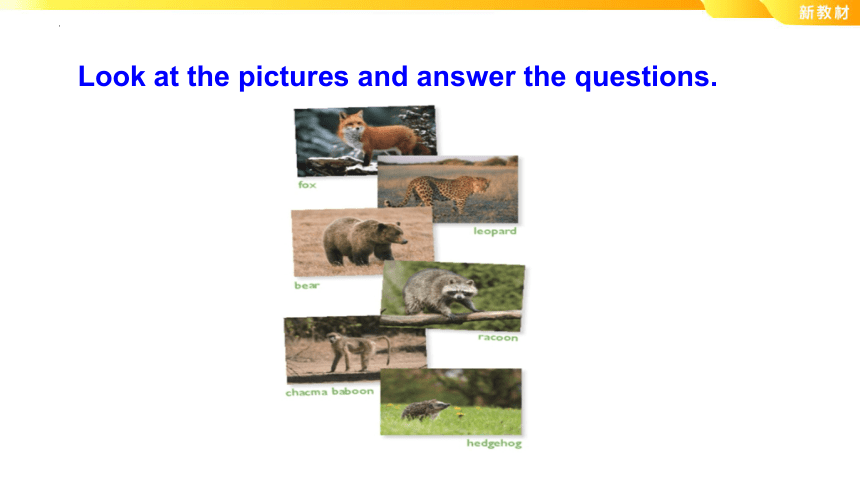
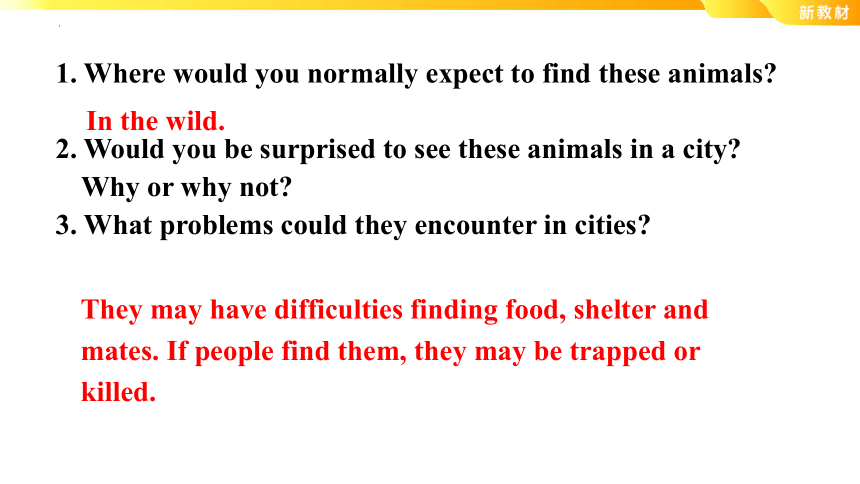
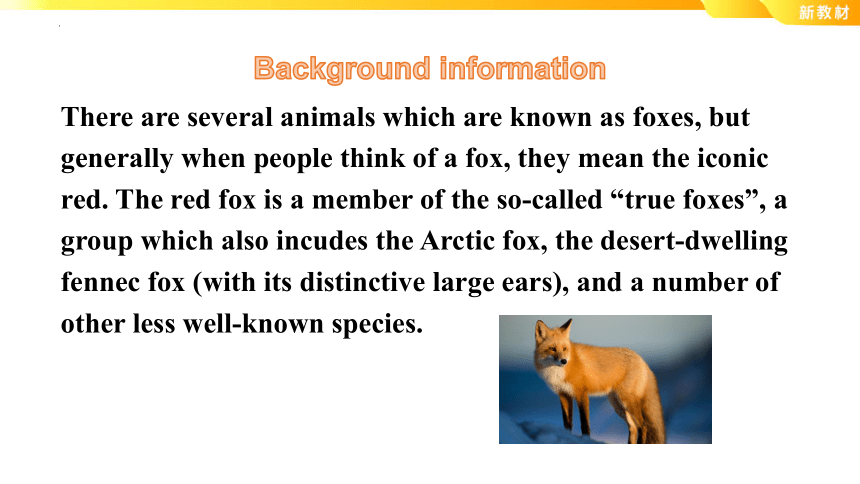
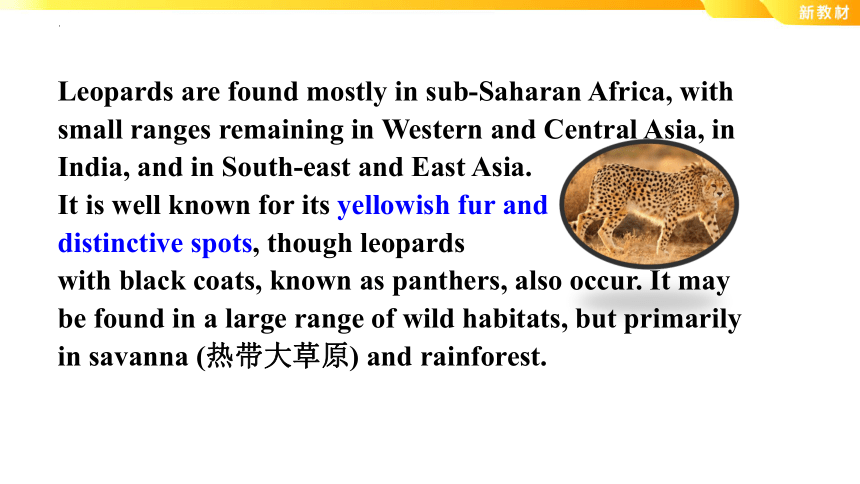
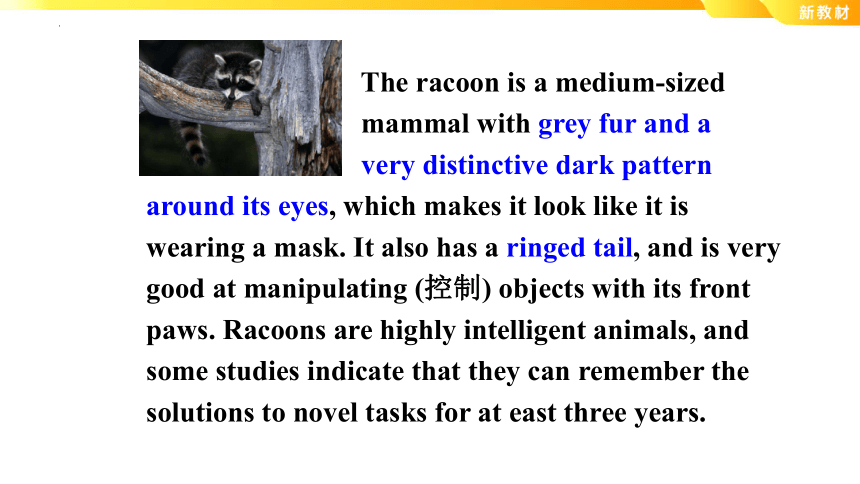


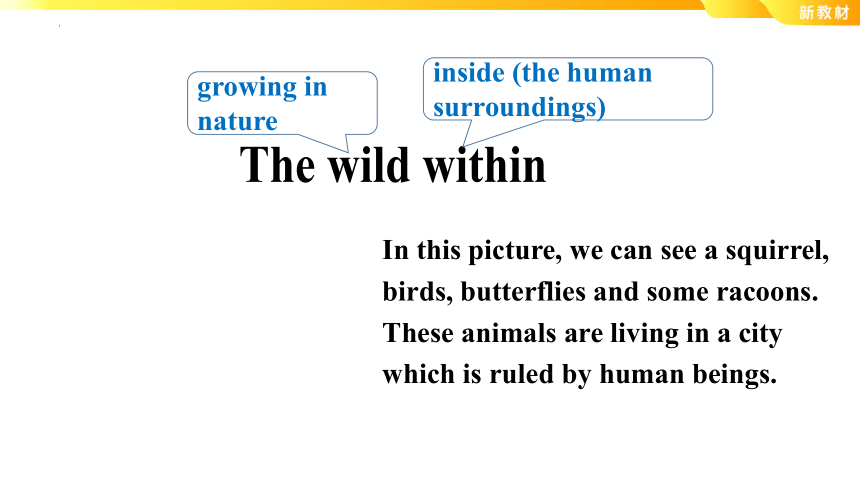
文档简介
(共42张PPT)
Unit 6
Survival
To learn to get the main idea of the passage from the title and the given picture
To learn to understand the main idea of each paragraph by getting the key information
To think how we can live harmoniously with all the living things in cities
Nature is not limited to faraway mountains and oceans, it also exists in urban cities and our daily lives. In this video we will unfold a world of wildlife we were probably not aware of. Let’s bear this in mind: Building a Shared Future for All Life on Earth.
Look at the pictures and answer the questions.
1. Where would you normally expect to find these animals
2. Would you be surprised to see these animals in a city Why or why not
3. What problems could they encounter in cities
In the wild.
They may have difficulties finding food, shelter and mates. If people find them, they may be trapped or killed.
There are several animals which are known as foxes, but generally when people think of a fox, they mean the iconic red. The red fox is a member of the so-called “true foxes”, a group which also incudes the Arctic fox, the desert-dwelling fennec fox (with its distinctive large ears), and a number of other less well-known species.
Background information
Leopards are found mostly in sub-Saharan Africa, with small ranges remaining in Western and Central Asia, in India, and in South-east and East Asia.
It is well known for its yellowish fur and
distinctive spots, though leopards
with black coats, known as panthers, also occur. It may be found in a large range of wild habitats, but primarily in savanna (热带大草原) and rainforest.
The racoon is a medium-sized
mammal with grey fur and a
very distinctive dark pattern around its eyes, which makes it look like it is
wearing a mask. It also has a ringed tail, and is very good at manipulating (控制) objects with its front paws. Racoons are highly intelligent animals, and some studies indicate that they can remember the solutions to novel tasks for at east three years.
The chacma baboon, also
known as the Cape baboon,
is one of the largest of all
monkeys. It is perhaps the
longest species of monkey and also
one of the heaviest. It is generally dark brown
to grey in colour, with a patch of rough hair
on the nape of its neck. It is primarily found in
southern Africa, including South Africa, Angola, Zambia and Mozambique.
Hedgehogs are small spiny mammals that feed
largely on slugs and insects, though they will
also eat fruit, birds’ eggs and carrion. They
are known for their habit of rolling into a ball
when threatened, using their spines to protect
themselves. Hedgehogs are native to Europe,
Asia and Africa, and are also
found as an invasive (侵入的)
species in New Zealand,
where they were unwisely introduced by European settlers.
The wild within
growing in nature
inside (the human surroundings)
In this picture, we can see a squirrel, birds, butterflies and some racoons. These animals are living in a city which is ruled by human beings.
The title means the wild
animals within the cities.
The Wild Within
Look at the title of the passage and the picture. Think about what the title means.
Now read the passage and check your answer.
Read the passage quickly and get the main idea of the passage.
The passage explains the impact of human urbanization process on wildlife by introducing the phenomenon of wild animals entering the cities, the reasons behind, their living conditions and the problems encountered in the cities and so on.
Para. 1: The phenomenon of more and more wild animals
entering cities.
Para. 2: The reasons why the wild animals are out of their
natural habitats.
Para. 3: Benefits of cities for wild animals.
What is each paragraph mainly about
Para. 4: The wild animals can adapt to cities and
become more intelligent.
Para. 5: The cities can be dangerous for some wild
animals.
Para. 6: We should learn to appreciate wild animals and
harmoniously sharing our urban habitats.
Choose the topic sentences for Paragraphs 2~5 and write them on the lines to complete the passage.
Para. 2: b. People often wonder about the reasons behind
this mass urban migration.
Most of us would assume that urban development and climate change are responsible for ... However truth this is, we also need to consider that ...
Para. 3: d. Yet, for its newest and wildest inhabitants, a city
can offer many benefits.
As our cities become greener, they offer increasingly appealing spaces to animals ... What’s more, hungry animals are finding plenty to eat in our gardens and ...
Para. 4: a. One thing crucial to the increasing number of
“urban animals” is their ability to adapt.
There is evidence that urban racoons are more intelligent than their wild cousins, as ... Some animals have even changed their living habits to fit in ...
Para. 5: c. For those animals that don’t adapt, the city can
be a dangerous or even deadly place.
Unable to distinguish between blue sky and glass, some birds crash into windows ... Some birds have yet to change their migratory routes ...
More and more wild animals are entering cities.
Reasons for migration:
Urban development and climate change push the animals _______________
______________________________
Benefits of cities for animals:
Appealing spaces as habits
______________________________
______________________________
Animals' adaption to cities:
Urban animals are more________ _______________
______________________________
Dangers for some animals:
______________________________ _______________
______________________________
We should learn to better understand and appreciate our wild neighbours, and ________________________________________________________________
Read the passage carefully, organize information from the passage and complete the diagram
Reasons for migration:
Urban development and climate change push the animals ___________________________.
______________________________________________________________________________________________
_______________________________________________
out of their natural habitats
Wherever they go, animals find towns and cities in their way. With nowhere else to make their homes, they have no choice but to move in with us.
Benefits of cities for animals:
Appealing spaces as habits.
____________________________________________________________________________________________.
____________________________________________________________________________________________.
Out of reach from many of their natural predators, these newcomers often flourish in their new city lives
Hungry animals are finding plenty to eat in our gardens and in the leftovers we throw away
Animals' adaption to cities:
Urban animals are more ____________ _________________________________.
________________________________________________________________________________________.
intelligent
than their wild cousins
Some animals have even changed their living habits to fit in with their new homes
Dangers for some animals:
________________________________________________________________________________________________.
________________________________________________________________________________________________.
Some birds crash into windows because they are unable to distinguish between blue sky and glass
Some birds have yet to change their migratory routes that take them through cities with high-rise buildings
We should learn to better understand and appreciate our wild neighbours, and ______________________________________________________________________________.
look towards harmoniously sharing our urban habitats
1. What should be responsible for the phenomenon of
“urban animals”
A. The thieves. B. We humans
C. The climate. D. Lack of food.
2. Which city do the foxes often appear
A. London B. Hong Kong
C. San Francisco D. New York
Choose the correct answers.
B
A
3. The author mention the crime in the first
paragraph to _____.
tell us the crimes of this kind are common
let us know how powerless the police can be when meeting these crimes
introduce the topic of the whole text
remind us that our cities are being ruled by wild animals
C
4. Why urban animals are more intelligent than wild
animals
A. Because there are more tasty food in cities.
B. Because they have to solve difficult problems.
C. Because they have to find new homes.
D. Because there are more humans.
B
5. What does the author want to tell us
We should be more careful because there are many dangerous animals in our cities.
The animals in cities are more intelligent.
Let’s get on well with our wild neighbours so that they can survive.
People encounter many problems caused by the animals.
C
Decide whether the following statements are True(T), False(F), or Not Given(NG).
1. In San Francisco, it’s common to see people getting attacked
by mountain lions. ( )
2. Animals can find towns and cities in their way no matter
where they go. ( )
3. Wild racoons are less intelligent than their urban cousins. ( )
4. Hungry animals don’t find things to eat in the leftovers we
throw away. ( )
NG
T
F
T
5. The birds have changed their migratory routes that take
them through cities with high-rise buildings. ( )
6. Whatever the reasons behind these species entering our cities,
one thing is undoubted — as it’s often a means of their
survival, they could stay with humans. ( )
T
F
本文语篇类型为说明文,主要介绍了野生动物进入城市这一现象的原因和它们在城市中的生存状况以及遇到的问题等,说明了人类城市化进程给野生动物带来的影响。
Para. 2 reasons
Structure
Para. 3 benefits
Para. 4 adaption
Para. 5 dangers
Para. 1 Phenomenon
Para. 6 conclusion
Below is a summary of the text with some content missing. Choose the right item from the box and make the summary complete.
urban, neighbour, flourish, take over, habit, bird, latecomer
Now, urban habitats have almost been 1. _________ by wild animals. Although most of us think that 2. ________ development and climate change are responsible for the migration of animals, there is a truth we cannot ignore humans are the 3. _________ in some animals’ territory. Far from many of their natural predators, the wildlife often 4. ________ in the increasingly appealing spaces offered by greener cities.
taken over
urban
latecomers
flourishes
urban, neighbour, flourish, take over, habit, bird, latecomer
What’s more, some animals are more adaptive than others. For example, foxes are good at finding living space and changing their living 5. ________, and racoons are intelligent enough to open rubbish bins to feed themselves. However, some animals like 6. ________ are under threat due to the poor adaptability. No matter how they adapt to our ways of urban living, however, it's important that we learn to better understand and appreciate our wild 7. ____________.
habits
birds
neighbours
Now think about what people can do to achieve a balance between the need for urban development and the protection of wild animals.
How would you describe the relationship between people and urban animals in the passage
I think people and urban animals are interrelated in the passage. On one hand, the animals entering cities may cause the loss of human property and pose a risk to personal safety. On the other hand, people could also destroy the habitats of animals to some extent and even threaten their lives.
2. What figure of speech is used in the first paragraph Why does the author choose to start the passage this way
In the first paragraph, the author uses personification (拟人) to describe what urban animals are doing, with the aim of attracting readers’ attention.
修辞手法
3. Some environmentalists argue that we should restrict urban development to leave enough natural habitats for wild animals. Do you agree with this Give your reasons.
I agree that we should restrict urban development to leave enough natural habitats for wild animals. As the range of human beings grow, people need more land and resources, which may lead to human habitations overlapping with those of wild animals. Faced with such conflicts, human beings often choose to reduce the habitats of animals or drive them out of their habitats, which eventually, may lead to the extinction of some wild animals.
Give some suggestions that you believe are good for both urban development and wildlife conservation.
Unit 6
Survival
To learn to get the main idea of the passage from the title and the given picture
To learn to understand the main idea of each paragraph by getting the key information
To think how we can live harmoniously with all the living things in cities
Nature is not limited to faraway mountains and oceans, it also exists in urban cities and our daily lives. In this video we will unfold a world of wildlife we were probably not aware of. Let’s bear this in mind: Building a Shared Future for All Life on Earth.
Look at the pictures and answer the questions.
1. Where would you normally expect to find these animals
2. Would you be surprised to see these animals in a city Why or why not
3. What problems could they encounter in cities
In the wild.
They may have difficulties finding food, shelter and mates. If people find them, they may be trapped or killed.
There are several animals which are known as foxes, but generally when people think of a fox, they mean the iconic red. The red fox is a member of the so-called “true foxes”, a group which also incudes the Arctic fox, the desert-dwelling fennec fox (with its distinctive large ears), and a number of other less well-known species.
Background information
Leopards are found mostly in sub-Saharan Africa, with small ranges remaining in Western and Central Asia, in India, and in South-east and East Asia.
It is well known for its yellowish fur and
distinctive spots, though leopards
with black coats, known as panthers, also occur. It may be found in a large range of wild habitats, but primarily in savanna (热带大草原) and rainforest.
The racoon is a medium-sized
mammal with grey fur and a
very distinctive dark pattern around its eyes, which makes it look like it is
wearing a mask. It also has a ringed tail, and is very good at manipulating (控制) objects with its front paws. Racoons are highly intelligent animals, and some studies indicate that they can remember the solutions to novel tasks for at east three years.
The chacma baboon, also
known as the Cape baboon,
is one of the largest of all
monkeys. It is perhaps the
longest species of monkey and also
one of the heaviest. It is generally dark brown
to grey in colour, with a patch of rough hair
on the nape of its neck. It is primarily found in
southern Africa, including South Africa, Angola, Zambia and Mozambique.
Hedgehogs are small spiny mammals that feed
largely on slugs and insects, though they will
also eat fruit, birds’ eggs and carrion. They
are known for their habit of rolling into a ball
when threatened, using their spines to protect
themselves. Hedgehogs are native to Europe,
Asia and Africa, and are also
found as an invasive (侵入的)
species in New Zealand,
where they were unwisely introduced by European settlers.
The wild within
growing in nature
inside (the human surroundings)
In this picture, we can see a squirrel, birds, butterflies and some racoons. These animals are living in a city which is ruled by human beings.
The title means the wild
animals within the cities.
The Wild Within
Look at the title of the passage and the picture. Think about what the title means.
Now read the passage and check your answer.
Read the passage quickly and get the main idea of the passage.
The passage explains the impact of human urbanization process on wildlife by introducing the phenomenon of wild animals entering the cities, the reasons behind, their living conditions and the problems encountered in the cities and so on.
Para. 1: The phenomenon of more and more wild animals
entering cities.
Para. 2: The reasons why the wild animals are out of their
natural habitats.
Para. 3: Benefits of cities for wild animals.
What is each paragraph mainly about
Para. 4: The wild animals can adapt to cities and
become more intelligent.
Para. 5: The cities can be dangerous for some wild
animals.
Para. 6: We should learn to appreciate wild animals and
harmoniously sharing our urban habitats.
Choose the topic sentences for Paragraphs 2~5 and write them on the lines to complete the passage.
Para. 2: b. People often wonder about the reasons behind
this mass urban migration.
Most of us would assume that urban development and climate change are responsible for ... However truth this is, we also need to consider that ...
Para. 3: d. Yet, for its newest and wildest inhabitants, a city
can offer many benefits.
As our cities become greener, they offer increasingly appealing spaces to animals ... What’s more, hungry animals are finding plenty to eat in our gardens and ...
Para. 4: a. One thing crucial to the increasing number of
“urban animals” is their ability to adapt.
There is evidence that urban racoons are more intelligent than their wild cousins, as ... Some animals have even changed their living habits to fit in ...
Para. 5: c. For those animals that don’t adapt, the city can
be a dangerous or even deadly place.
Unable to distinguish between blue sky and glass, some birds crash into windows ... Some birds have yet to change their migratory routes ...
More and more wild animals are entering cities.
Reasons for migration:
Urban development and climate change push the animals _______________
______________________________
Benefits of cities for animals:
Appealing spaces as habits
______________________________
______________________________
Animals' adaption to cities:
Urban animals are more________ _______________
______________________________
Dangers for some animals:
______________________________ _______________
______________________________
We should learn to better understand and appreciate our wild neighbours, and ________________________________________________________________
Read the passage carefully, organize information from the passage and complete the diagram
Reasons for migration:
Urban development and climate change push the animals ___________________________.
______________________________________________________________________________________________
_______________________________________________
out of their natural habitats
Wherever they go, animals find towns and cities in their way. With nowhere else to make their homes, they have no choice but to move in with us.
Benefits of cities for animals:
Appealing spaces as habits.
____________________________________________________________________________________________.
____________________________________________________________________________________________.
Out of reach from many of their natural predators, these newcomers often flourish in their new city lives
Hungry animals are finding plenty to eat in our gardens and in the leftovers we throw away
Animals' adaption to cities:
Urban animals are more ____________ _________________________________.
________________________________________________________________________________________.
intelligent
than their wild cousins
Some animals have even changed their living habits to fit in with their new homes
Dangers for some animals:
________________________________________________________________________________________________.
________________________________________________________________________________________________.
Some birds crash into windows because they are unable to distinguish between blue sky and glass
Some birds have yet to change their migratory routes that take them through cities with high-rise buildings
We should learn to better understand and appreciate our wild neighbours, and ______________________________________________________________________________.
look towards harmoniously sharing our urban habitats
1. What should be responsible for the phenomenon of
“urban animals”
A. The thieves. B. We humans
C. The climate. D. Lack of food.
2. Which city do the foxes often appear
A. London B. Hong Kong
C. San Francisco D. New York
Choose the correct answers.
B
A
3. The author mention the crime in the first
paragraph to _____.
tell us the crimes of this kind are common
let us know how powerless the police can be when meeting these crimes
introduce the topic of the whole text
remind us that our cities are being ruled by wild animals
C
4. Why urban animals are more intelligent than wild
animals
A. Because there are more tasty food in cities.
B. Because they have to solve difficult problems.
C. Because they have to find new homes.
D. Because there are more humans.
B
5. What does the author want to tell us
We should be more careful because there are many dangerous animals in our cities.
The animals in cities are more intelligent.
Let’s get on well with our wild neighbours so that they can survive.
People encounter many problems caused by the animals.
C
Decide whether the following statements are True(T), False(F), or Not Given(NG).
1. In San Francisco, it’s common to see people getting attacked
by mountain lions. ( )
2. Animals can find towns and cities in their way no matter
where they go. ( )
3. Wild racoons are less intelligent than their urban cousins. ( )
4. Hungry animals don’t find things to eat in the leftovers we
throw away. ( )
NG
T
F
T
5. The birds have changed their migratory routes that take
them through cities with high-rise buildings. ( )
6. Whatever the reasons behind these species entering our cities,
one thing is undoubted — as it’s often a means of their
survival, they could stay with humans. ( )
T
F
本文语篇类型为说明文,主要介绍了野生动物进入城市这一现象的原因和它们在城市中的生存状况以及遇到的问题等,说明了人类城市化进程给野生动物带来的影响。
Para. 2 reasons
Structure
Para. 3 benefits
Para. 4 adaption
Para. 5 dangers
Para. 1 Phenomenon
Para. 6 conclusion
Below is a summary of the text with some content missing. Choose the right item from the box and make the summary complete.
urban, neighbour, flourish, take over, habit, bird, latecomer
Now, urban habitats have almost been 1. _________ by wild animals. Although most of us think that 2. ________ development and climate change are responsible for the migration of animals, there is a truth we cannot ignore humans are the 3. _________ in some animals’ territory. Far from many of their natural predators, the wildlife often 4. ________ in the increasingly appealing spaces offered by greener cities.
taken over
urban
latecomers
flourishes
urban, neighbour, flourish, take over, habit, bird, latecomer
What’s more, some animals are more adaptive than others. For example, foxes are good at finding living space and changing their living 5. ________, and racoons are intelligent enough to open rubbish bins to feed themselves. However, some animals like 6. ________ are under threat due to the poor adaptability. No matter how they adapt to our ways of urban living, however, it's important that we learn to better understand and appreciate our wild 7. ____________.
habits
birds
neighbours
Now think about what people can do to achieve a balance between the need for urban development and the protection of wild animals.
How would you describe the relationship between people and urban animals in the passage
I think people and urban animals are interrelated in the passage. On one hand, the animals entering cities may cause the loss of human property and pose a risk to personal safety. On the other hand, people could also destroy the habitats of animals to some extent and even threaten their lives.
2. What figure of speech is used in the first paragraph Why does the author choose to start the passage this way
In the first paragraph, the author uses personification (拟人) to describe what urban animals are doing, with the aim of attracting readers’ attention.
修辞手法
3. Some environmentalists argue that we should restrict urban development to leave enough natural habitats for wild animals. Do you agree with this Give your reasons.
I agree that we should restrict urban development to leave enough natural habitats for wild animals. As the range of human beings grow, people need more land and resources, which may lead to human habitations overlapping with those of wild animals. Faced with such conflicts, human beings often choose to reduce the habitats of animals or drive them out of their habitats, which eventually, may lead to the extinction of some wild animals.
Give some suggestions that you believe are good for both urban development and wildlife conservation.
